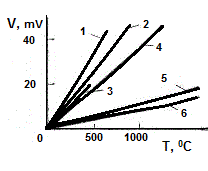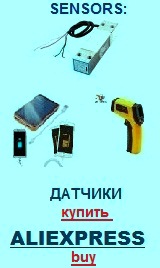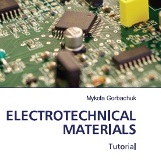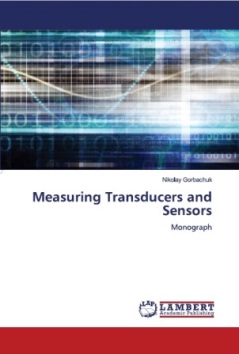Transducers, gauges, sensors - Information portal © 2011 - 2023 Use of material is possible by placing an active link
Physical basis of the transformation of the measured parameters
Ionizing radiation
Home >> Temperature, thermoelectricity >> Thermoelectric transducer. Thermocouple
русский / english



• Information about various converters and sensors of physical quantities, parameters of various physical processes is presented.
• Electrophysical properties and effects in various electrical materials.
• Theory, experimental results, practical application
Thermoelectric transducers
Thermoelectric transducers convert a change in the measured quantity (temperature) into a change in current resulting from a temperature difference at the junction of two dissimilar materials, in which the Seebeck effect occurs (Figure 1).
The thermoelectric transducer is better known as a thermocouple, in which the probe consists of two junctions, one of which is placed at the point where the temperature is measured and the other at the reference temperature (Fig.2). The potential difference V1 - V2 which is formed on the two junctions (known as contact potentials) depends on the temperature of the junctions and is measured by a voltmeter. Thus, the voltmeter reading represents the temperature difference between the junction.
Fig. 1. Thermoelectric transducers. Seebeck effect, in which a current appears in a circuit consisting of the junction of two dissimilar metals at different temperatures
Fig.2. Thermoelectric transducers. Principle of thermocouple operation
Figure 3. Typical dependences of voltage on temperature difference for thermocouples whose junctions are made of different materials:
1 - nickel-chromium/coistanthan (E); 2 - iron/constanthan (type J), 3 - copper/constanthan (type T); 4 - nickel-chromium/nickel-manganese-aluminum-silicon (type K); 5 platinum-rhodium/platinum (type R) 6 - platinum-rhodium/platinum (type S)
Fig.3 shows curves characterizing the dependence of voltage on temperature difference for a number of typical materials from which the junction of thermocouples are formed. Although these dependencies appear to be linear, detailed studies show that this is not entirely the case.
In practice, it is not as easy to achieve the necessary accuracy of temperature measurements with thermocouples as the above reasoning might suggest, since connecting a voltmeter to a thermoelectric circuit itself forms a new junction in the circuit. In addition, the object whose temperature is being measured may be at some distance from the voltmeter, making it difficult to form a stable reference temperature.
Literature:
1.Measurements in industry.vol.1-3.Reference book edited by D.I.Akeykin. 1990.
2.Tensometric measurement of building structures and materials. A.B.Rensky, D.S.Baranov, R.A.Makarov. M.-1977.
3.Measuring transducers. K.Bridley. Energoatomizdat.1991.
See also:
Thermoelectric transducer - thermocouples:
For measuring and researches in the laboratory terms of thermocouple it is possible to make independently. For this purpose the produced use by industry of wire from materials suitable for making ...
For making of thermocouples mostly use next alloys: kopel, alumel, chromel ...>>>
Calibrating of thermocouples (calibration charts)
For a condition, when a free end(shut) of thermocouple is at the zero of degrees celsius. A temperature is driven to °C, E.M.F. (tension) in mV.
chromel - alumel (-270 °с to 1370 °с)
(0 °с to 1820 °с)
chromel - constantan (-260 °с to 1000 °с)
copper - constantan (-270 °с to 400 °с)
chromel - kopel (-20 to 200 °с)
Making thermocouple:

See also:
CONVERTERS, GAUGES, SENSORS
Information, news, advertising



